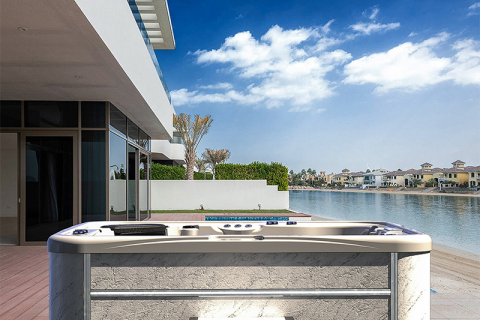
- Home
- >
News
During the water filling process, the whirlpool spa hot tub must be closed, especially its water pump and nozzle system. It is strictly forbidden to operate the equipment when there is no water or the water level does not reach the safety line.
The water temperature of a whirlpool spa hot tub causes blood vessels to dilate, which leads to increased blood flow. If you stay in the tub for too long, abnormal blood circulation may cause low blood pressure, which manifests as dizziness, drowsiness, fatigue, and other symptoms.
Six weeks to three months after delivery (recovery period) During the six weeks to three months after delivery, the mother's body gradually recovers and the recovery process of the uterus gradually stabilizes. At this time, most mothers' physical strength, immune system, and hormone levels tend to be normal, and they can withstand proper body care and hydrotherapy activities.
For certain types of buyers, a swim spa tub is not only a value-added device, but may also become one of the key factors in their home purchase decision. Especially in some high-end residential markets, the presence of a swim spa tub can significantly enhance the appeal of a home, thereby obtaining a higher premium in the home transaction.
The liver and kidneys are the main detoxification organs of the human body. They maintain the health of the body by filtering toxins and metabolic waste from the blood. The whirlpool hot tub not only promotes blood circulation, but also enhances the working efficiency of these two organs through the heating water temperature and massage effect.
Clean the inside of the jet with white vinegar or a special detergent. The acidic components in white vinegar can effectively dissolve scale and mineral deposits. Pour white vinegar into the inside of the jet and gently shake the jet to ensure that the vinegar can penetrate every corner of the jet. After soaking for 10 to 15 minutes, rinse it with clean water.
Generally speaking, a standard seat (including the back, waist and legs) is usually equipped with 4-6 nozzles, while a reclining position (covering the whole body) is usually equipped with 8-12 nozzles. Assuming that a hydrotherapy hot tub contains 4 seats (including one lying position), the total number of reasonable nozzles is between 20 and 35.
In 2007, UCSF conducted a study on 11 men with fertility problems and found that after using the hot tub for at least 30 minutes a week for three months, the number and activity of sperm decreased significantly. After stopping use, 45% of the participants increased their total sperm count by about 491% within 3-6 months.
The internationally recognized safe range of whirlpool spa hot tub water temperature is generally 36°C to 40°C, which is the temperature range that most adult users can comfortably and safely withstand: ·36°C: close to normal human body temperature, suitable for long-term soaking, especially for those who are sensitive to heat; ·37~38°C: ideal bathing temperature for most adults, with good relaxation effect; ·39°C~40°C: thermal therapy level temperature, suitable for short-term intensive hydrotherapy, used to relieve deep muscle tension.
——No, and it is not recommended to do so for a long time! The correct approach should include: · Always use the original heating system; · Regularly maintain the heater and filter; · Do not modify the circuit or directly cut off the power at will; · When changing water, a small amount of heating assistance can be used, but the temperature and injection method should be strictly controlled; · If there is a problem, contact the manufacturer or professional technician for repair in time to avoid secondary problems caused by artificial substitution operations.
-- Most insurance companies, based on standards such as the U.S. Medicare program, determine that only small hot water equipment designed specifically for medical purposes meets the DME standard. Common hot tubs are classified as personal care products, such as massage chairs, saunas, or swimming spas, and do not meet the definition of "medical devices."
7 aspects to judge whether the outdoor spa hot tub needs to be replaced or upgraded: The first aspect: structural integrity and changes in the material of the cylinder The second aspect: Are the electrical system and control module aging? The third aspect: Are the heating and insulation systems efficient and energy-saving? Fourth aspect: Is the spa experience still comfortable? Fifth aspect: Is the water quality management system efficient and hygienic? Sixth aspect: Is the cost of use and maintenance rising? Seventh aspect: Is the compatibility with modern equipment backward?












